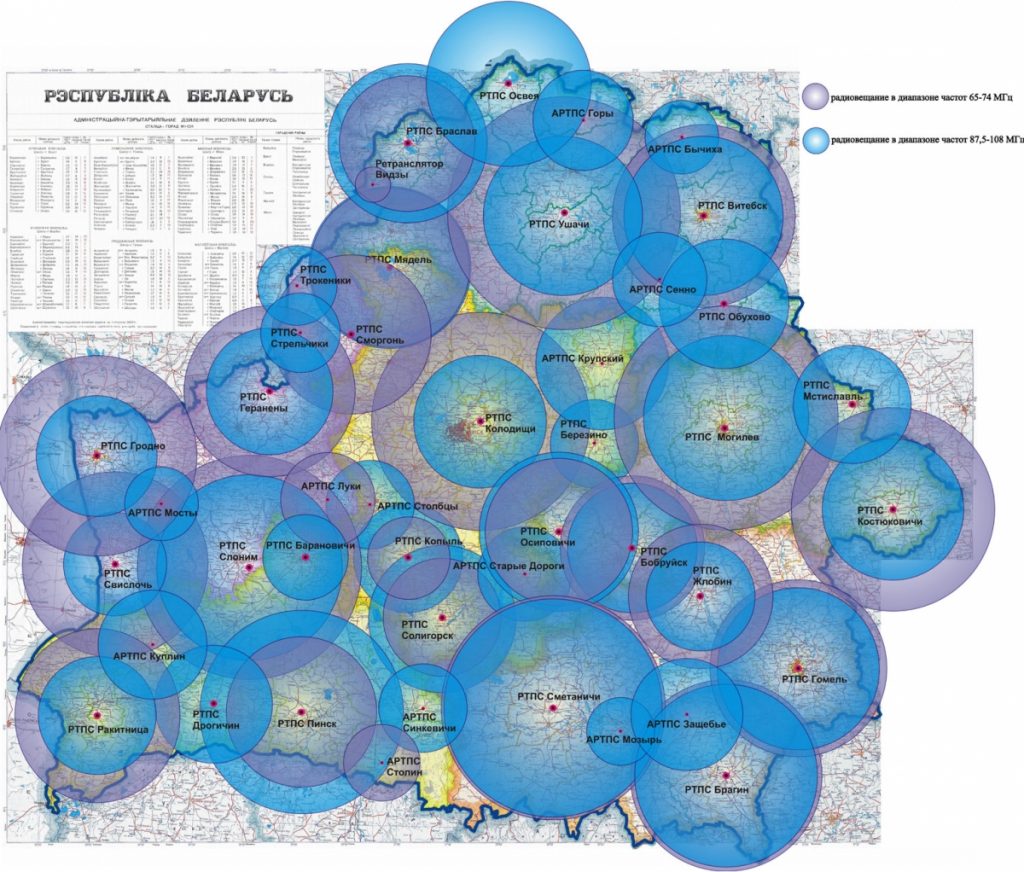
Source
In “White Russia”, a country where President Alexander Grigor’evič Lukashenko is increasingly tightening repression against free voices and journalists, there are more than 110 channels operating on old FM, from 66 to 73.8 MHz. Pershy Kanal, Kanal Kultura and Radio Stalista are the three stations of the Belarusian National Radio and Television Company (BTRC) that operate throughout the country. In addition to these, there are local stations, which are also in the orbit of the state broadcaster: Gomel FM, Radio Mogilev, Radio Grodno, Radio Brest, Radio Vitebsk (all in Russian language) and Radius FM which operates in the capital, Minsk.
A double net, FM and Oirt

Source
According to our Belarusian correspondent Alexey Yankovsky, there are no plans to shut down transmitters in the OIRT band, only a few vague rumours, and there is probably still a good presence of receivers in homes. However, Alexey points out that the network is a duplication of the one in the CCIR FM band: for every transmitter in the 66-73.8 MHz range, another one has already been active for years from the same location in the 87.5-108 MHz range. The same is true for all the other broadcasters, except for Stalista which, in fact, is missing a few installations to have an ‘overlapping’ network. And the presence of these dual networks, in terms of both energy and maintenance costs, is likely to become an increasingly difficult cost for the BTRC to bear, especially after the pandemic: if a choice is necessary, it could be the OIRT network that is sacrificed. Already at the moment, the OIRT transmitters of all the various channels are generally only switched on from 6 or 7 a.m. until midnight, while the FM transmitters run for 24 hours.
by Franco Martelli, part 4-continues
